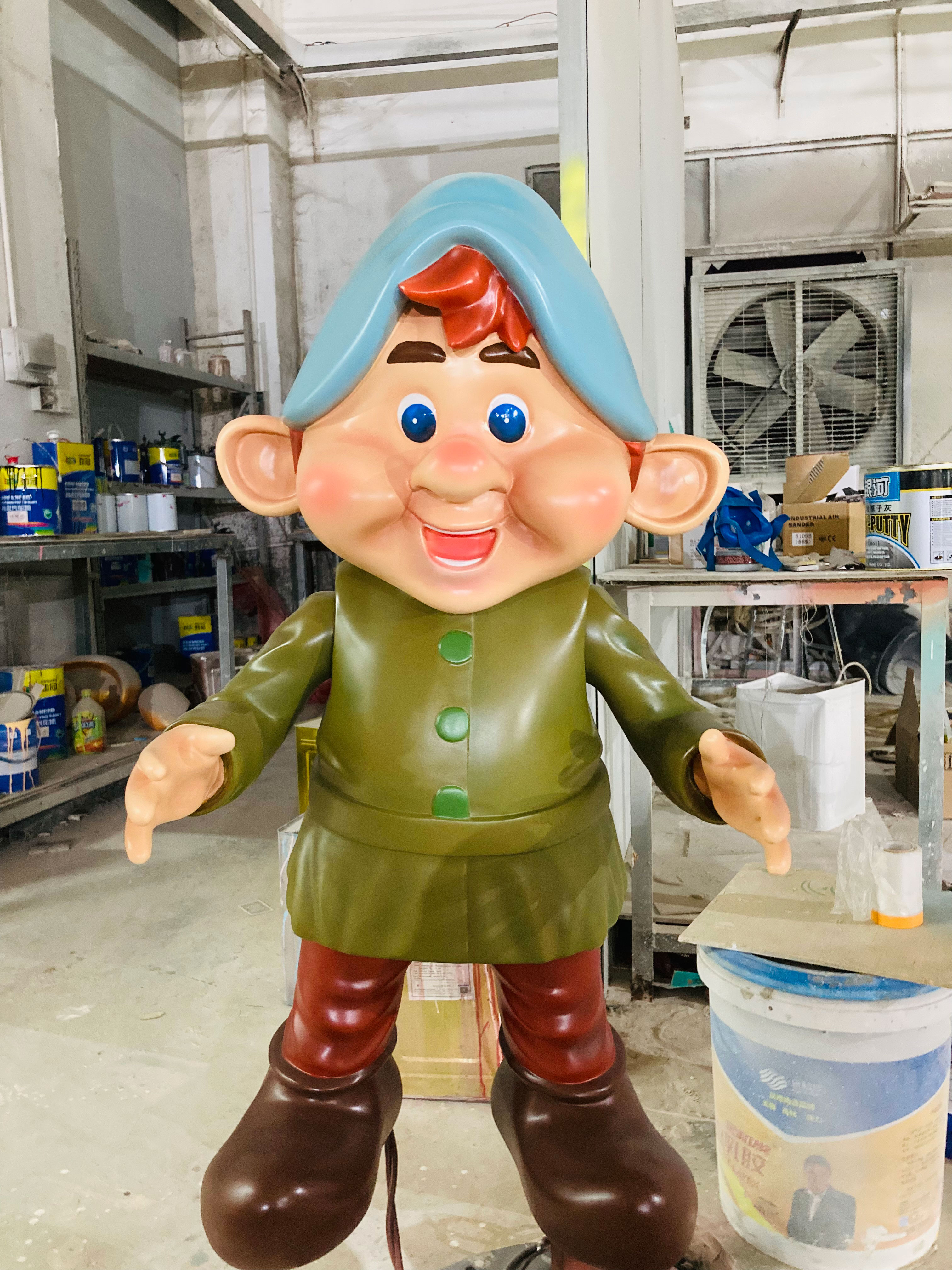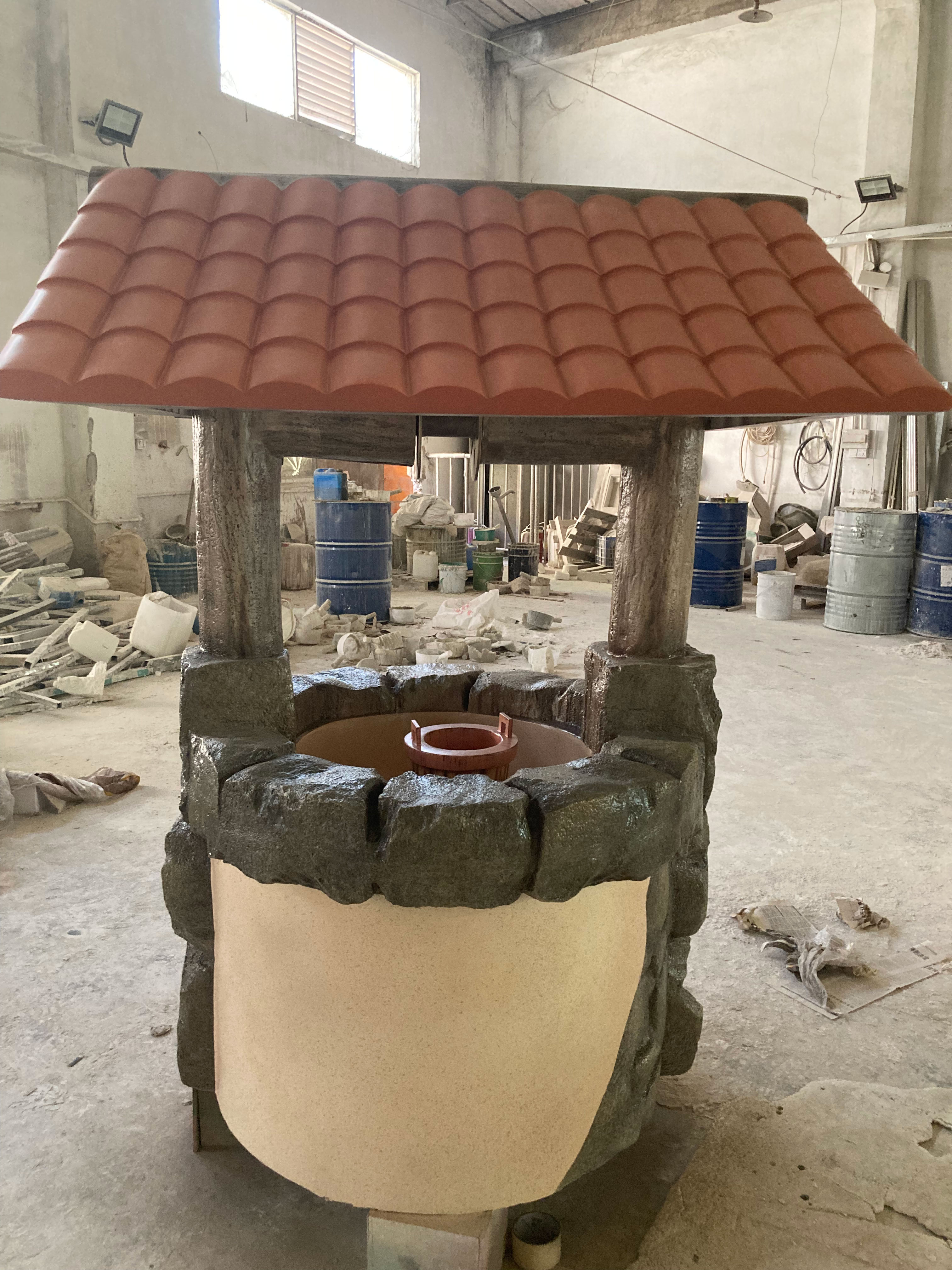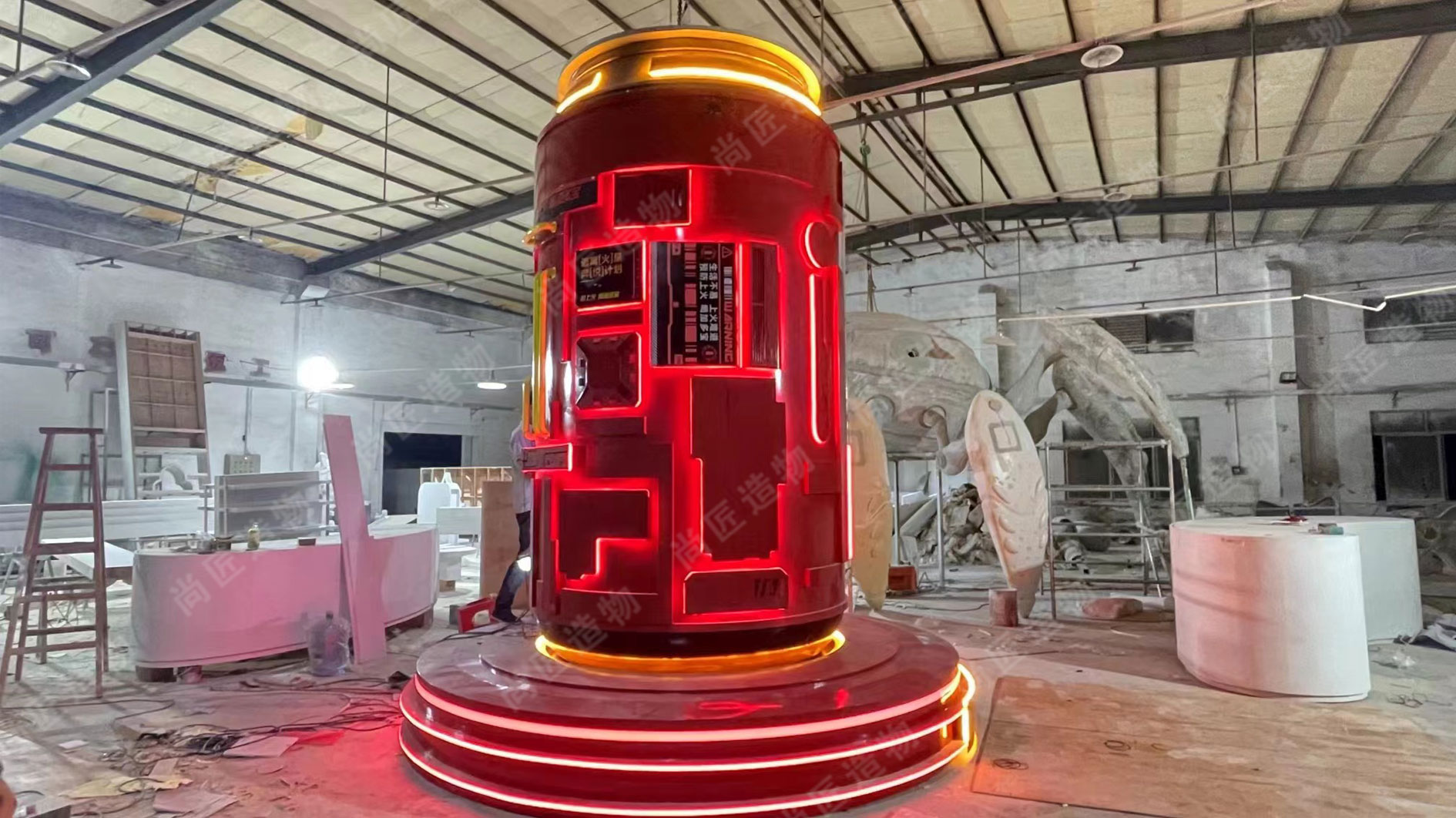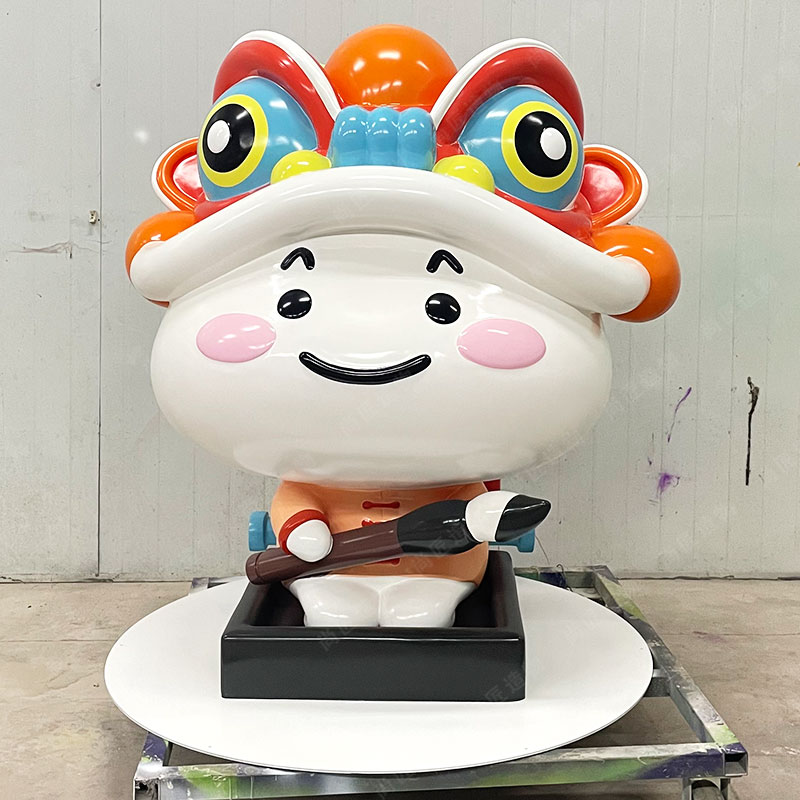Key Takeaways
Merchandise-inspired stainless steel public art bridges retail culture and urban design, creating durable installations that resonate with communities. These sculptures reinterpret everyday commercial items—like clothing, electronics, or food packaging—into monumental metalworks, fostering dialogue about consumerism and creativity.
"Stainless steel's versatility allows artists to mirror the precision of mass-produced goods while infusing them with cultural meaning," explains sculptor Elena Velez.
Key benefits of this art form include:
| Benefit | Description |
|---|---|
| Durability | Stainless steel resists corrosion, ensuring longevity in outdoor settings. |
| Aesthetic Flexibility | Reflects light dynamically, adapting to urban environments. |
| Community Connection | Familiar retail motifs invite public interaction and nostalgia. |
For cities, integrating such works into parks or plazas can revitalize underused spaces. A 2021 study by the Urban Art Institute found that 68% of respondents felt retail-inspired sculptures made public areas more engaging.
Tip: When commissioning similar projects, consider collaborating with local businesses to reflect regional commerce. For example, a coastal town might feature oversized sculpted fishing gear, while a tech hub could highlight abstracted circuit boards.
By merging industrial materials with recognizable commercial forms, these artworks challenge perceptions of value—transforming fleeting consumer goods into enduring cultural symbols.

Commerce Meets Creativity in Public Spaces
Urban landscapes increasingly serve as canvases where commercial inspiration intersects with artistic vision. By reimagining everyday retail items—from consumer products to packaging—as stainless steel sculptures, artists create installations that blur the boundaries between advertising and aesthetic expression. This fusion elevates mundane objects into thought-provoking landmarks, transforming shopping districts and civic plazas into spaces where commerce contributes to cultural dialogue.
The use of stainless steel ensures these works withstand environmental stressors while maintaining visual sharpness, allowing oversized replicas of merchandise to become permanent fixtures. For instance, a sculpted stainless steel coffee cup might anchor a downtown square, its reflective surface mirroring passersby and shifting light. Such installations invite viewers to reconsider the role of consumer goods beyond their utilitarian purposes, framing retail concepts as shared cultural symbols. By integrating commercial motifs into public art, cities foster connections between local businesses, artists, and residents, turning transactional imagery into communal storytelling tools.

Stainless Steel Art Elevates Retail Inspiration
Stainless steel’s reflective surfaces and structural resilience make it an ideal medium for reimagining retail merchandise as public art. By scaling everyday consumer items—such as perfume bottles, shopping bags, or electronics—into monumental sculptures, artists reinterpret commercial symbolism through an artistic lens. This approach not only preserves the recognizable forms of retail culture but transforms them into enduring landmarks that spark curiosity. For instance, a Cartoon sculpture crafted from polished steel might reinterpret animated characters as abstract, geometric forms, blending nostalgia with contemporary design.
The material’s resistance to corrosion ensures these installations withstand urban environments, maintaining their visual impact for decades. Unlike temporary retail displays, stainless steel artworks create permanent connections between commerce and community identity. Cities increasingly adopt such pieces to revitalize public spaces, using familiar retail motifs to engage diverse audiences. This trend reflects a shift toward art that bridges consumer culture and civic pride, inviting viewers to reconsider the role of everyday objects in shaping shared environments. By elevating retail inspiration into durable art, stainless steel becomes a conduit for transforming transactional symbols into cultural touchstones.

Transforming Merchandise into Urban Sculptures
The process of converting everyday retail items into stainless steel public art begins with reimagining commercial objects as cultural symbols. Artists and designers analyze products—from clothing to kitchenware—to extract their most recognizable forms, then reinterpret them through geometric abstraction or hyperrealistic detailing. By scaling these items to monumental proportions, ordinary merchandise gains new meaning as permanent fixtures in parks, plazas, and streetscapes. This transformation relies on stainless steel’s unique properties: its resistance to corrosion ensures longevity, while its reflective surface interacts dynamically with sunlight and urban lighting.
A notable example includes oversized replicas of consumer goods like shoes or coffee cups, which serve as both artistic statements and subtle tributes to local industries. These installations often incorporate functional elements, such as seating integrated into a sculpted shopping bag or solar panels disguised as product packaging. Municipalities increasingly commission such works to bridge commercial history with contemporary aesthetics, creating landmarks that spark conversations about consumption and identity. For instance, IP character sculpture projects demonstrate how branded figures can evolve into communal symbols when rendered in enduring materials. The practice challenges viewers to reconsider the boundary between advertising and artistry, turning transactional objects into shared cultural heritage.
Durable Public Art Born from Retail Concepts
Retail-inspired stainless steel artworks reimagine everyday consumer goods—from clothing to electronics—as permanent fixtures in urban landscapes. By casting familiar merchandise in corrosion-resistant metal, artists bridge fleeting commercial trends with lasting cultural value. This approach prioritizes structural integrity, leveraging stainless steel’s ability to withstand weathering, vandalism, and temperature fluctuations. For instance, oversized sculptures of handbags or shoes retain their polished finish for decades, mimicking the aspirational durability of luxury branding while subverting its ephemeral nature.
The transition from disposable products to enduring art also reflects shifting priorities in urban design. Cities increasingly favor installations that combine aesthetic appeal with low maintenance, making stainless steel a practical choice. A notable example includes kinetic sculpture, where retail-inspired metal forms incorporate movement to engage viewers dynamically. Such works maintain visual clarity even as patinas develop over time, ensuring their legibility as both artistic statements and cultural commentaries. By anchoring retail motifs in robust materials, these creations transform commercial symbolism into shared heritage, inviting communities to reconsider relationships between consumption and collective memory.

Sculpting Commerce into Community Engagement
Stainless steel public art rooted in retail concepts reshapes how communities interact with commercial themes. By enlarging everyday objects like shopping bags, tools, or packaging into monumental sculptures, artists transform transactional symbols into focal points for civic dialogue. These installations often occupy parks, plazas, or transit hubs, inviting viewers to reconsider the role of commerce in shared spaces. Unlike traditional Fiberglass sculpture, stainless steel offers unmatched durability against weathering, ensuring decades of engagement without structural compromise.
The process involves abstracting recognizable merchandise forms while retaining their essence—a coffee cup might gain geometric angles, or a shoe could adopt fluid curves. This balance between familiarity and artistic reinterpretation sparks conversations about consumer culture’s impact on local identity. Municipalities increasingly commission such works to bridge economic activity with placemaking, using art to soften commercial imagery’s utilitarian associations. When positioned near markets or business districts, the sculptures act as wayfinding landmarks while reinforcing neighborhood character through accessible, visually striking metaphors.
Stainless Steel Reinvents Merchandise as Monuments
By reimagining everyday retail objects as permanent installations, stainless steel public art bridges the gap between transient consumer culture and enduring civic landmarks. This approach transforms mass-produced items—like soda cans, sneakers, or electronics—into polished, oversized sculptures that command attention in urban settings. The material’s corrosion resistance ensures these works withstand weather and time, while its reflective surface interacts dynamically with light and surroundings, creating evolving visual narratives.
Cities increasingly adopt such pieces to spark dialogue about consumerism’s role in shaping shared spaces. A Realistic sculpture of a towering shopping bag, for instance, might critique disposable culture while serving as a gathering point. The juxtaposition of familiar commercial forms with monumental scale invites viewers to reconsider the value and legacy of commonplace items. Architects and artists collaborate to position these works in parks, plazas, or transit hubs, where their industrial aesthetic complements modern infrastructure without overshadowing functional urban design.
Retail-Inspired Art for Lasting Civic Impact
Public art inspired by retail objects bridges everyday commerce with cultural storytelling, creating landmarks that resonate across generations. By reimagining consumer goods—like clothing, electronics, or food packaging—as large-scale stainless steel sculptures, artists anchor familiar forms in communal spaces, sparking dialogue about shared values and local identity. These installations often reinterpret mundane items into symbolic gestures: a towering coffee cup might celebrate a city’s café culture, while a stylized smartphone could reflect technological progress. Unlike temporary advertisements, such works prioritize longevity, leveraging stainless steel’s resistance to corrosion and vandalism to withstand decades of exposure.
Communities benefit from this fusion of art and commerce through enhanced placemaking. A sculpture modeled after a historic product, for instance, might honor regional industries or craft traditions, fostering civic pride. Meanwhile, interactive designs—such as mirrored surfaces that reflect viewers—invite participation, transforming passive observation into collective experiences. Over time, these installations become embedded in the social fabric, serving as waypoints for residents and visitors alike. Their durability ensures that conversations about consumerism, heritage, and creativity persist long after the initial novelty fades.

Merging Commerce and Culture Through Metalwork
Stainless steel’s versatility makes it an ideal medium for blending commercial themes with cultural expression. By reimagining everyday retail objects—like shopping carts, product packaging, or branded symbols—artists create sculptures that resonate with shared consumer experiences while anchoring civic identity. These works often draw from local businesses or historic trade practices, embedding economic narratives into public spaces. For instance, a stainless steel replica of a vintage store sign might honor a neighborhood’s commercial roots, whereas abstract interpretations of modern merchandise reflect evolving consumer trends.
The material’s durability ensures these installations withstand weather and time, mirroring commerce’s enduring role in shaping communities. Unlike temporary advertisements, such art becomes a permanent fixture, inviting reflection on how trade and creativity intersect. Municipalities and businesses increasingly collaborate on these projects, recognizing their dual potential: boosting foot traffic through aesthetic appeal while fostering cultural pride. This synergy transforms utilitarian metal into storytelling tools, where commerce isn’t just transactional but a bridge to collective memory and aspiration.
Conclusion
The integration of retail concepts into stainless steel public art represents a nuanced evolution in how urban spaces engage with commerce and culture. By reimagining everyday merchandise as enduring sculptures, artists bridge the gap between utilitarian objects and aesthetic expression, offering communities tangible connections to shared economic and creative values. Stainless steel, chosen for its resilience and reflective qualities, ensures these installations withstand environmental challenges while mirroring the dynamism of their surroundings.
This approach not only preserves the visual language of commerce but elevates it into a dialogue about permanence and identity. As cities continue to seek innovative ways to blend functionality with artistic vision, merchandise-inspired installations stand as testaments to the adaptability of public art. They challenge viewers to reconsider the boundaries between consumer culture and communal storytelling, proving that even transient commercial items can leave lasting imprints on civic landscapes. The result is a symbiotic relationship where art draws vitality from commerce, and commerce gains deeper cultural resonance through artistic reinterpretation.

FAQs
How does merchandise-inspired stainless steel art differ from traditional sculptures?
Unlike conventional statues, these works directly incorporate retail products or packaging designs, reimagining everyday items as large-scale artistic statements. Their commercial origins create immediate viewer recognition while challenging perceptions of ordinary objects.
What makes stainless steel ideal for public art installations?
The material’s corrosion resistance ensures longevity in outdoor settings, requiring minimal maintenance. Its reflective surface interacts dynamically with sunlight and urban environments, amplifying visual impact across seasons.
Can any retail item become public art?
While most installations draw from culturally recognizable products like beverage cans or footwear, artists often modify proportions or combine multiple items to create symbolic narratives. Local communities sometimes vote on which merchandise concepts to immortalize.
Do these sculptures serve functional purposes beyond aesthetics?
Many double as seating areas, shade structures, or wayfinding landmarks. A 12-foot steel coffee cup might house miniature planters, while a sculpted smartphone case could display neighborhood maps.
How do cities fund such projects?
Collaborations between municipalities, corporate sponsors, and artists are common. Retail brands occasionally commission works featuring their products, with contracts ensuring artistic control remains with creators.
What prevents these installations from appearing as oversized advertisements?
Juried selection processes prioritize artistic merit over commercial messaging. Many works abstract the original product through geometric simplification or contextual juxtaposition—a steel perfume bottle might be placed beside historic monuments to spark cultural dialogue.
 ch
ch English
English






